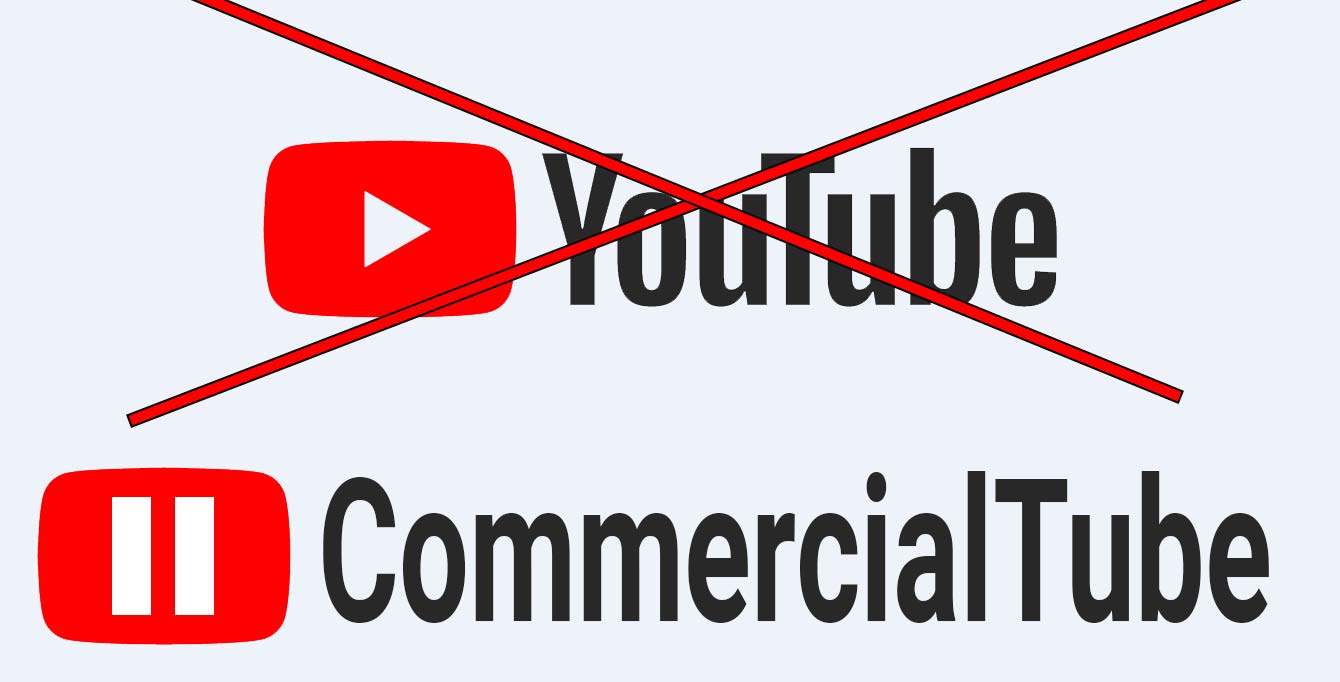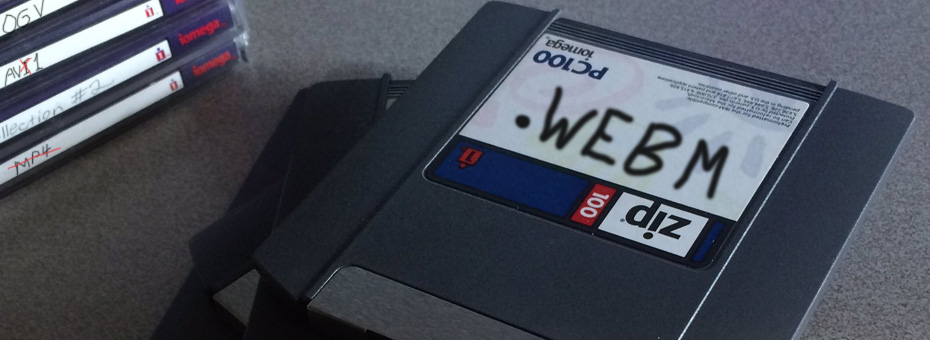Glossary of the codecs this site supports.
This entry was designed to act as the clarification of the codecs that are currently supported on this site. We feel it is necessary to break this off into its own individual entry similar to what we did for 7-Zip so that anyone who is new to our site can understand what is happening here.
Existence of entry.
First, we must explain why this entry even exists in the first place. Which is simple. We host our own videos. This article will be the article we shall be editing for the definition of how our videos stream instead of editing 30+ entries every single time there's an announcement. In staying with the principle designs of our site of being totally self-sufficient from any of the major tyrannical sites such as YouTube.

Need further explanation on the topic of why YouTube is a group of Tyrants? Well, here, here, and here. Have fun reading. Long story short in order for video streaming services to continue profiting that the rest of the internet requires homogenization to the lowest quality of standards in order for them to be both children and communist-friendly while adhering to a double-standard that major networks can easily override on their very platform because "Fuck you! Give me money!"
We don't need their streaming services where we are going.
How we embed videos with HTML5 markup code:
We used to use FooPlugins for this type of work. But have since retired that as well as the WordPress player and just use HTML/CSS markup code instead. It may be a little harder to type into WordPress instead of just using the video command embedded right into WordPress. but it gives us more control.
The CSS code:
/* HTML5 video player markup action */
#player-overlay {
position: relative;
top: 0;
left: 0;
width: 100%;
height: 100%;
background-color: #000;
z-index: 999;
}
video {
display: block;
width: 100%;
height: 100%;
}
The HTML code:
<div id="player-overlay"><video poster="/directory/to/still/image/content/poster.jpg" preload="none" controls="controls" width="640" height="420"> <source src="/directory/to/videos/Video-av1" type="video/mp4" codecs="av01.0.15M.10, aac" /> <source src="/directory/to/videos/Video.webm" type="video/webm" codecs="vp9.0, opus" /> <source src="/directory/to/videos/Video.mp4" type="video/mp4" codecs="avc1.4d002a, aac" /> <source src="/directory/to/videos/Video.ogv" type="video/ogg" /> <p style="text-align: center;"><strong><span style="color: #ff0000;"><em>If you are seeing this message, it means your browser does not support embedded videos and/or the ability to play embedded videos was disabled. If possible alternative instructions will be listed below this message. Server protect you. - S</em></span></strong></p> </video></div>
Video codecs and the BetaMAX icon:
Often times there will also be an HTML5 video player above this tape icon. The HTML5 Player will attempt to play the video without you the reader leaving the page. You have probably seen the icon of our beta-MAX cassette to the right like what is in this paragraph. We do this as a marker for you to download the video if you wish to play it in a third-party player such as VLC just to name one really good video player. You see, we leave it entirely up to you how you watch our videos here. Our HTML5 player will not automatically play like some news network sites. Because everything stays on this server. Privacy is further protected.
Video Codecs supported:
If you wish to dive into the insane technical details of how we encode video. Check out our blog about FFmpeg.
- AV1 - by AOMedia is the newest codec to hit the internet. As discussed a little in the state of the blog 2021 deployment was attempted using the naming convention the AOMedia originally filed under however it ended with too many errors. You probably noticed we did something a little evil with naming the file extension to .av1 while defining what the actual codec is. This is because the MIME type is indeed supported by newer browsers but the HTML5 markup does not like it when we use the MIME type video/av1 . This allows for newer browsers to pick it up right away while older browsers will happily pick up the webm or older version instead. If you have an old operating system such as Android 7 and a Pentium 4 with AV1 libraries installed in windows 10. There might be some black screen and audio only. Or studdering issues.
- WEBM - The VP9 Standard was designed by the WebM Project which was funded by Google to develop a new open-source way of streaming. They too have joined AOMedia to help out AV1 as it is the next evolutionary step. This codec has become our primary method of streaming on this site for now as in accordance with CanIUse WebM is exceeding 95 percent compatibility. IOS and OSX Safari still cannot play VP9 out of the box. As well as internet explorer 9 and below. Fuck both of those browsers. Mac users have Firefox and Chrome.
Backup Codecs.
In order to save space any video that was at 1080p or higher on my website has been resized to 720p. This is to ensure computers that are slower can easily play these videos as these are our definition of 'last resort' codecs.
- MP4/h264 - made commercially by MPEG-LA - Originally we got rid of this codec because of MPEG-LA's issue with copyright over their codec. But the standard has been out for so long that it doesn't really matter anymore. Compatibility for this format is in the 90 percent region which is why despite how old this codec is it's still used to this very day. Hosting MP4s also serves a secondary purpose for spiders that are looking for a sitemap-video.xml file and refuse to accept any other codec/format but for the most basic of standards. As described in this article the whole concept of how crawlers -really- index video is a bit of a dark art.
- OGV - The Ogg/Theora video format is almost our 'last resort' codec in case a browser rejects WebM. Even though CanIUse gives it about 35 percent compatibility as the mobile market pretty much turned its nose up at such an ancient codec. Its advantage realistically comes from older or slower machines like Raspberry Pi's where an OGV can easily be played at 720p to them without issue. OGV was the start of the HTML5 markup standard for self-hosted videos and we support it still to this day out of respect.
Video Codecs never used here:
- MPG, MP2, MPEG2 - Same reason as MP4 just older and less efficient. It should be noted that our first website made 320x200 .mpg files to show off some of our download game mods. Yeah, we're crazy old. However, there are better ways of showing videos now.
- FLV - Macromedia/Adobe Flash Video - This was YouTube's "Last Resort" for delivering content until for better or worse flash has been blown off of the internet landscape. It will not be our last resort. ;)
- AVI - Audio Visual Interleave. With the letter "I" and not the number "1." We haven't made AVI's available since the days of DivX.
- MOV - Never was an apple kind of guy. thus, Quicktime is totally not happening.
- MKV - Although it's a Suitable codec to use within OBS because even if you lose frames. It's not the end of the world. MKVs just do not stream nicely across a web service.
- CDXL/XL - What the.. Wow! Still rocking your Amiga, aren't you? Short answer, NO. Don't think our videos would be usefully compressed to 120x100 at 15fps.
- RV/RM - Realplayer is surprisingly still alive to this day. But no, not supporting that either. Same reason as MP4.
- WMV - Windows Media Video? Hahahahah! No.
Audio codecs and the tape icon.
This section deals with the audio you may hear throughout all of s-config.com. If it is a voice such as narration clips, or audio testing of microphones. Or random sounds we smashed together in FL-Studio and called 'music'. This is how it's recorded.
Audio Codecs supported:
- OPUS - the successor to the OGG audio format produced by xiph.org . This audio format is akin to AAC where you can have multi-channel audio which may be useful in the future. CanIUse reports that it's fully compatible with 78 percent of the market with apple, of course, being the one lagging behind with partial support. Opus is also used when encoding WEBM and AV1 videos.
- OGG - This is the original format that we used throughout the site and has been around for an incredibly long time. Also made by xiph.org. CanIUse reports the same compatibility ratio. This audio format is also used for our OGV videos of course.
- WAV - For demonstration purposes, we may hand out a WAV uncompressed file so that the user can hear the quality coming right from the source equipment. Just about any computer from an XT with an 8-bit audio card to a modern PC can play WAV. CanIUse is at 97 and would be higher if Internet Explorer actually used their player instead of just saving it.
Audio Codecs retired:
- MP3 - Despite the CanIUse index is 98 percent and practically every computer on the planet earth can understand an MP3 file. Combined with the fact that MP3 has no real legal issue for commercial use any more due to its age. We're still phasing it out.
- AAC - Same situation as MP4 - The sister codec AAC was used in our MP4 files but those have been phased off of this site as well. Sorry, commodore 64 fans with the MP3 player cartridge.
Audio Codecs never used here:
- IFF - What's up Amiga users? sadly, no IFF files here.
- RM - RealNetworks again? No, nothing here.
- WMA - Windows media audio? No thanks.
Final thoughts.
This page is going to be constantly evolving as new video standards emerge and we'll try to update it when we can. Keeping all of the descriptions and technical terms on this page helps out the greater good for lack of better words on every page on this site as we don't have to keep blasting the same information over and over again.
Until next time. That's what server said.
+++END OF LINE.


Fuck MP3 and especially OGG/OPUS. MP3 was never that good to begin with and OGG was just a knee-jerk reaction 20 years ago to MP3's popularity and patent encumberance which Fraunhofer rarely enforced anyways. As lossy codecs go AC3 is what the big boys play with and is also freeware now (Dolby's patents expired around the time FHG's did for MP2/3).
*And* it supports 6-channel discrete surround....
For starters, that is your opinion about the codecs used. Appreciate the passion.
Just because it was rarely enforced doesn't mean it was never enforced. Just asserting enforcement of those standards just once is more then enough to never use it. To us it's better to use standards based on free usage from the codecs initial inception.
We'll remain out of the 'big-boy' status. Thanks.
*AND* We don't see ourselves running production with 6-channel discrete surround. But hey! If we get to that level of sound engineering we'll certainly revisit that topic.
Thanks for checking out this blog.
- S